#plant witchcraft
Text
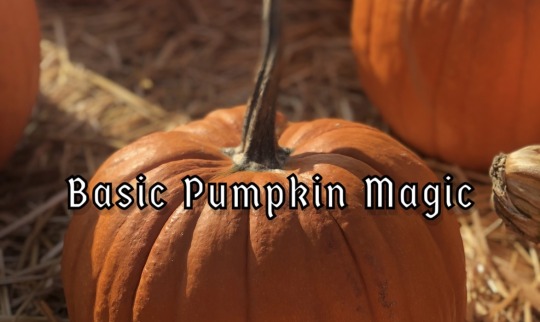
•~• Some Basic Pumpkin Magic •~•
Even though July isn’t even over yet and autumn is not as near as I would like it to be, I wanted to talk about one of my favorite things in the world - pumpkins! I always love when these bad boys come around in the autumn, so to be prepared for the coming autumn months, I thought I’d make a little summary of some pumpkin associations and magic!
Colors
When we think of pumpkins, we tend to think of the color orange, which is associated with attraction, creativity, and new opportunities. But pumpkins can also be found in other colors, such as green, yellow, and white! If you want the general associations of a pumpkin but want to use a different kind of color magic, maybe look into the less iconic but still wonderful varieties of pumpkins.
Pumpkin Associations and Uses
Pumpkins are often associated with abundance and prosperity due to their large size and many, many, seeds. The seeds are also a feature that promotes new life and expansion. Pumpkins also tend to last long periods of time when not disturbed, so the expansion aspect of the seeds can be longer-term as the pumpkin itself can last longer.
Pumpkins are also ruled by the moon and their element is water. Doing spells and rituals regarding the moon and/or water can be amplified by the pumpkin’s natural associations with these things.
Pumpkins are also used to ward off evil and for spirit protection. Carving them into faces is a common tradition and they became used in what we know as a jack-o-lantern as a replacement for the traditional turnip. If you want to double up on the protection aspect, carve a sigil, rune, or other protective symbol into the pumpkin instead of a face.
Which also leads me to the time of year that these are around. Pumpkins are an autumnal plant and are heavily associated with harvest festivals and spiritual festivals. The most well known would be Mabon and Samhain, with our modern day Halloween coming from Samhain, thus the jack-o-lanterns at this time of year outside of the magical community.
Other Magical Uses
Aside from the jack-o-lantern spells, the most obvious and my personal favorite way to use pumpkins is kitchen magic. I have sweet pumpkin tea that I stir clockwise to attract abundance and prosperity. You can also use them in baking, such as a pumpkin pie, or regular cooking, such as pumpkin soups and stews. They work really well with spices. If you’re working on spiritual protection with the pumpkin, using cinnamon to enhance the protection properties. Also cinnamon and pumpkin is one of my all time favorite flavor combinations so it also tastes amazing!
The pumpkin’s physical characteristics can also be used in spells. Carve out your pumpkin and use it as a bowl or container for your spellwork.
And last on this post but definitely not the last way to use it is the drying of its seeds and using the seeds throughout your magical year. As mentioned, these seeds are great for new beginnings, and as they are connected to a moon associated plant, new moon spells and rituals of attracting abundance and new beginnings work really well when adding some pumpkin seeds.
I hope y’all found this helpful and let me know if you want basic breakdown of anything else!
#green witchcraft#green witch#kitchen witch#kitchen witchcraft#witchblr#witch community#witch#witchcraft#magical correspondences#correspondences#plant magic#plant witchcraft#plant associations#plant correspondences#pumpkin#pumpkin correspondences#paganblr#pagan#samhain#mabon#wheel of the year#dirt.txt
307 notes
·
View notes
Text
🌿How to harvest & dry herbs🌿

⚠️This is just my personal approach based on research, mentors and my own experience, please do your own research too ⚠️
Some general guidelines:
These are all recommended for both uses, magical and medicinal, but particularly for plant material you’ll want to give medicinal use.
Always harvest ~10 meters away from contamination sources (roads and cars, railroads, constructions, factories, etc. Even more serious stuff like landfills and heavy metals) Plants can absorb toxic chemical compounds from any these sources, so if you plan to ingest them or apply on your skin etc, avoid contamination sources. Examine your area to find where it’s safest to harvest plant material from.
Only take up to 30% of plant material, preferably less (leaves, flowers, berries, roots) this is to allow for healthy regrow.
Don’t take material with visible harm, illness or bugs, such as yellowed or bug bitten / holey leaves, etc. Educate yourself to recognize different possible bugs or parasites or plant illnesses that may affect your local flora to avoid these.
Sometimes you’ll have better results with fresh materials, you don’t always need to dry them. Know when to use what, depending on your goal and what compounds you want to extract, and how it’s best to extract them.
If you prefer fresh, you can keep fresh herbs in a vase with water for up to a week, more or less.
Clean the branches & leaves by soaking them or washing them in saltwater to scare away little critters, and dry them stem-up, making small bundles with stems fairly separated so everything is well aireated, and always away from sunlight. Do not clean with alcohol, detergent, or any other substances. Just water or salty water will do.
Roots, flowers, berries and bark can be dried in drying racks or basquets. Separate them from each other, specially flower petals, to dry them thoroughly and keep in a dark place until they’re fully dried (you’ll know if they crack when handling them and don’t feel soft anywhere anymore). For roots, bark and berries, move and rotate every so often to make sure they dry evenly, or just dry them in the oven if you’re brave! (be careful not to burn them)
Aromatic herbs should be harvested before they bloom, when you see the fully formed buds and their smell (and taste!) is strongest.
When cutting the stems, cut at an angle to allow for healthy regrow.
Always make sure you’re harvesting what you think you’re harvesting. Learn to identify plant species properly, and always, always research about lookalikes it may have, as they could be toxic or poisonous or harmful in some way. This is necessary for safety reasons.
Store everything in glass jars or paper bags, away from humidity, to prevent mold. I don’t recommend plastic bags or containers as they can more easily retain humidity but that’s me. Check on your stuff often too!! Different things will last more or less time on the shelf.
⚠️Extra reminder to always check which part of the plant is medicinal, check if any other parts could be toxic or harmful, check for dosages, contraindications, possible allergies, and possible interactions with anything else you’re taking!!!!!!!!
For specific plant parts:
Flowers: Harvest as soon as they’ve fully bloomed, during the full moon.
Berries and fruits: Harvest right after the first frost, generally in autumn. Look for deep color and tight, glowy skin. I like to harvest these under a waning moon.
Seeds and pods: Collect these when all flowers are gone, usually in late summer, under a waning moon.
Leaves: Ideally, collect these from bright green and flexible limbs, the first warm days of spring when there’s new sap and no flowers yet, but for many species you can take some leaves all year round. Under a waxing or full moon does it for me.
Bark: Harvest during the first warm days of spring, when the sap rises. You’ll find newly formed bark easier to peel off. Rather than peeling the trunk directly, cut off a branch or limb and peel it off completely, it’ll cause less harm to the tree or bush. Under a waxing moon it is.
Roots, rhizomes, tubers: Harvest after all the leaves are gone, around late autumn, but before all the good stuff stored in them is used during the winter. Under a waning or new moon.
Some superstitions:
These are more specifically for the magical properties of the plant.
Some folks say you shouldn’t harvest plant material with iron scissors or other iron tools, as iron scares away the spirit of the plant, and thus, the potency of whatever your working on will be less.
For some plants, you’ll find specific prayers, chants or charms, more or less complicated rituals, to harvest specific parts at specific dates. This is, again, for the spiritual properties rather than medicinal. I am the type to believe proper harvest makes both the work and the medicine stronger, but it’s up to you to decide how to go about harvesting certain plants considered “sacred”, and even what plants are considered “sacred” will also change depending on your own practice, culture, tradition, region and more, so do your research!
It’s common belief to not speak while you’re going to harvest the herb, and neither when coming back, as to not alert the spirit your intentions and out of respect for what it gave you or what it’s doing for you.
But while you’re there, after harvesting, let the plant spirit know why you’re in need of it’s aid and leave some kind of offering in return (again, do your own research on specific plants and their folklore, but some general things such as water, sugar or eggshells, and more traditional things like a certain number of coins, will likely work just fine)
With some plant species, particularly the poisonous kind, or some associated with the devil in folklore, you’ll likely find ways to protect yourself from the spirit’s anger upon being unearthed or cut. These range from giving praise to the spirit in the form of poems, songs, or offerings before getting to harvesting, to drawing circles in the dirt around it with holy water, a knife, or your own hand, and may even be having to cut the branches or unearth the plant in a specific manner (some say backwards, some say away from you) to prevent it from harming you. Sometimes simply carrying protective charms will do. Learn the folklore of each species you work with!
#herbalism#green witch#green magic#green witchcraft#rootwork#black herbalists#black herbalist#witches of color#brujería#brujeria#bruja verde#curanderismo#curandera#plant witch#plant witchcraft#cottagecore#cottage witch#forest witch#grandmacore#farmcore#faeriecore#goblincore
589 notes
·
View notes
Text

Luna has new leaves coming in from her new garden light!☺️
#luna#plant#plant mom#plant mum#witchblr#witchcraft#witch#baby witch#witch community#magic#magick#nature#meditation#plant energy#cacti#cactus#plant care#plant craft#plant witchcraft#witchcraft community#growing#growing up#energy healing#energy work#life#plant life#crystals#proud mom#proud mum#happy
7 notes
·
View notes
Text
I've had this plant for a while, and I'm think I'm doing good in keeping it alive so far.
Everyone meet Willow. (Yes I named it/her)

It's an African Spear plant.
I know its a succulent, but I'm still proud of myself.
#me trying to keep a plant alive is going well so far#so far so good#honestly I have black thumb#but i'm doing my best#me dabbling in some plant magic/small scale gardening#random life things#my plants#plant magic#gardening#plant witch#witchcraft#witchblr#green witchcraft#green witchery#green witch#plant witchcraft
6 notes
·
View notes
Text
Just a disclaimer:
When I reblog lists of herbal uses, it’s for my own personal use, so I can cultivate a general understanding on what a herb does in different witches’ perspectives.
I do not support lists of herbs that just state the herb and a single word “use” I think it does no justice to the plant.
Everything in nature has virtues, sometimes those virtues can only be accessed by using the plant a certain way.
And sometimes the specific plant you are harvesting from will have a completely different set of uses than what it’s typically known for.
Unfortunately witchcraft is seldom easy to categorize and make accessible for the masses and posts that make lists like these should always be read with utmost discernment.
#folk witchcraft#traditional witchcraft#witchcraft#occult#witchblr#trad witch#witch#folklore#witch history#trad witchcraft#plant lore#plant witchcraft#herbology#occult herbalism
36 notes
·
View notes
Text

Galanthus, the first-born,
pure herald of spring,
I am blessed each year
to see your awakening.
#witchblr#plant witchcraft#good morning to the snowdrops! I’m offering each of the plants in the garden a short poem once they wake up#(note: I like using asleep to describe when plants are dormant and awake when they’re blooming or fruiting!!)#my garden tag
12 notes
·
View notes
Text
Daily Draw - 11/5/23 - Botanica Tarot (Kevin Jay Stanton)
10 of Coins - Eucalyptus // The Emperor - John the Conqueror Root

Different kind of daily draw at the moment. Hekate prodded me to ask the Botanica about which plant allies would be willing to work with me for my upcoming spellwork, and these are the cards that fell out of the deck. Normally I don't bother with cards jumping out, but I sensed this time that this was my answer.
Eucalyptus will be easy, I got them growing outside my house like crazy. The bonus of living in Australia lol. I may check on which tree would be willing to work with me because there are a few different species out there iirc.
There are two sweet peppermint/willow myrtle trees in the green corridor out the back of our house that I have always loved. I greet them often, and they gifted me a small branch of their leaves to use for making khernips. They're a Western Australian native tree and my favourite tree tbh. I'm still learning to work with plant spirits, but I've had a few fleeting connections with these trees enough to consider these two trees allies.
For John the Conquerer root, I am ... not certain I have any in my herb stock. I might do, but I suspect I will have to buy some. It's not a root I've used much of, if at all, but one whose name I'm familiar with.
For the Eucalyptus, I'm going to try to find a WA native species and use that. That feels like the right vibe. And I'll throw in a sweet peppermint leaf as my personal herb as well.
The tarot meanings of the cards seem to bode well for my work, so I'll keep that in mind as I prepare my rites and my spellwork. Now to go see if I need to buy some John the Conquerer root.
2 notes
·
View notes
Text


My snapdragon plant exploded recently (it used to only have 2-3 blooming stalks) and the basil isn’t doing too bad. We had a short bought of slugs trying to eat it to death but I think I cleared them all out 🌿
#plants#Maeve says a thing#green witch#green magic#green witchcraft#plant witch#plant magic#plant witchcraft#herbs#flowers#herb magic#herb witch#herb witchcraft
3 notes
·
View notes
Text

Pictured is a bloodroot plant, which I have only seen bloom ONCE (when I took this picture). Bloodroot typically blooms for about two weeks in the spring. It's a gorgeous plant that grows everywhere here. It gets its name from the sap which is a deep red color and was (and still is) used by indigenous peoples of North America to make a rich dye. While it has many external medicinal uses, it is toxic when ingested.
#nature photography#plant photography#photography#witchcraft#plant allies#green witch#green witchcraft#warrior witch coven#bloodroot#plant magic#plant witchcraft#herbalism
8 notes
·
View notes
Text
hey witchblr can someone tell me what it means when my chinese money plant suddenly starts dying
#I’m slightly afraid#witchcraft#nature#plant witch#witchblr#naturecore#cottagecore#green witch#plants#money plant#plant witchcraft#witch#witch tips#witch things
3 notes
·
View notes
Text


Been loving life again 💫💞
#love and light#aphrodite#aphrodite devotee#pink#flowers#plant witchcraft#witch#positive#venus#affirmations#manifesation
1 note
·
View note
Text


Datura Brugmansia flying ointment
So what’s the fuss all about?
I’ve decided that my first ever post on this page will be about my datura brugmansia based flying ointment. My recipe follows animistics techniques that involve the calling back of the plant spirit power inside the flowers I’ve gathered through shamanic calling. I’ve infused the flowers in pure olive oil and they’ll be laying there for about two-three weeks. After that, I’ll be adding beeswax and other ingredients and let everything come together.
I’ll keep you posted if you’re interested!
1 note
·
View note
Text
Herb's Properties
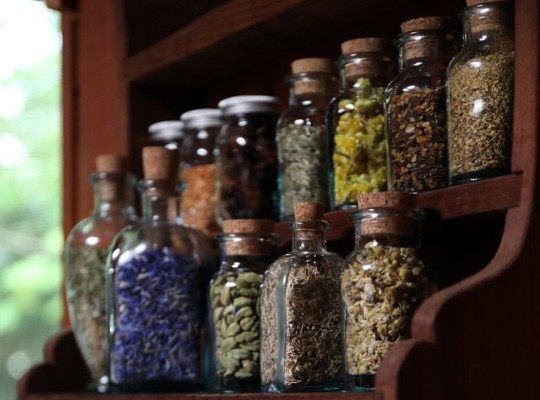
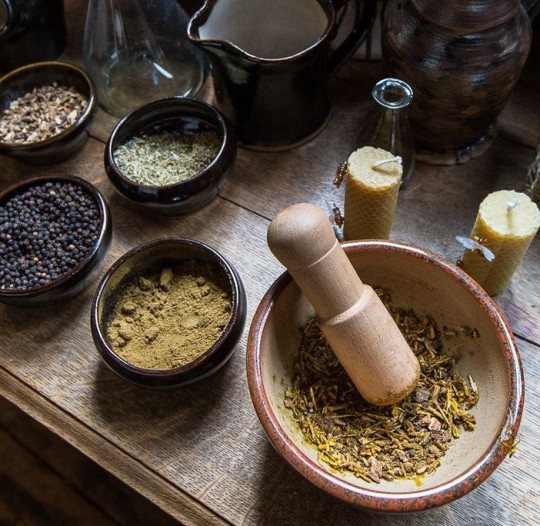
Basil: money, luck, prosperity, happiness
Bay Leaf: energy, cleansing, can be charged with almost any intention
Camomile: Caring, kindness, luck, growth, self-love growth, confidence, avoiding negativity, happiness
Cinnamon: passion, quick success, fire magick
Chia seeds: Growth, health, kindness, Property
Chilli flakes: Pride, confidence, power, strength, Passion
Cumin: Courage, bravery, protection, loyalty
Dandelion: wishes, charisma, success, good luck
Dill: sexual love, luck, protection
Eucalyptus: cleansing, healing, purifying, relaxing, comfort
Fennel: hate, anger
Flax seeds: Prosperity, growth, new beginnings
Ginger: fiery passion, success, and personal power
Jasmine: love, dreams, sensuality, luxury and kindness
Lavender: love and attraction, purification, relaxation, restful sleep
Nutmeg: luck, Health, Fidelity, Love, Prosperity, comfort, loyalty
Oregano: comfort, love, warmth
Paprika: Pride, confidence, power, strength
Parsley: Cleansing. purification
Peppermint: healing, purification, love and energy, cleansing, prosperity
Poppy seeds: protection, intuition, self-assurance, hexing and cursing
Rose: love, beauty, harmony, romance, attraction
Rosemary: cleansing, purification, wisdom, protection
Sesame seeds: Prosperity, growth, health, nurturing
Spearmint: love, cleansing, renewal, blessing
Sunflower seeds: happiness, growth, joy
Thyme: beauty, strength, courage
Turmeric: confidence, creativity, energy
Vanilla: love and sexuality
tip jar
#thecupidwitch#witchcraft#witch community#witches#witchcore#witch#witchblr#green witch#grimoire#herbs#book of shadows#wicca#pegan#peganism#wiccablr#pagan wicca#wiccan#magic#ko fi support#baby witch#beginner witch#chaos witch#eclectic witch#folk witchcraft#hedge witch#kitchen witch#tarot witch#traditional witchcraft#witch aesthetic#plants and herbs
2K notes
·
View notes
Text

29K notes
·
View notes
Text



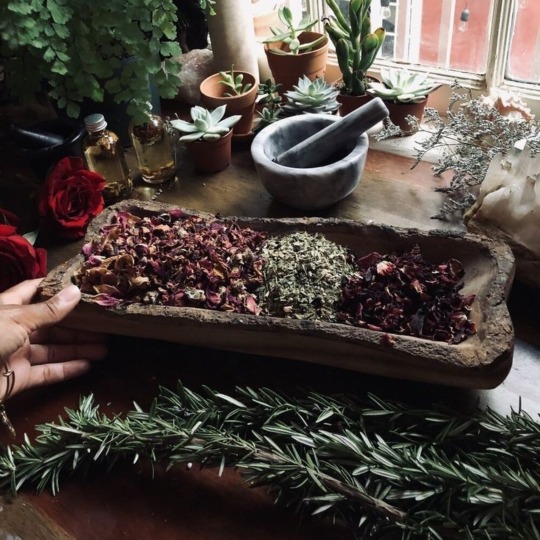
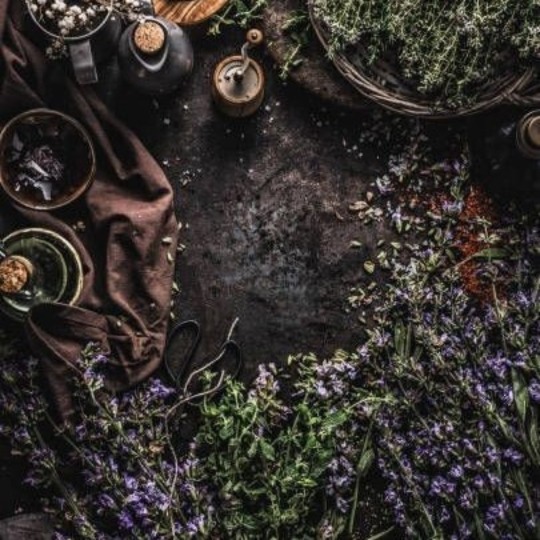

#moodboard#aesthetic#icons#pinterest#naturecore#witchy#witch#witches#witchcraft#witchblr#witchcore#witch community#witches of tumblr#pagan wicca#pagan witch#paganism#plant witch#pagan#paganblr#herbs#herb witch
1K notes
·
View notes
Text

Hyacinthus, in bluish shades
of rich poetic fame,
your tragedy, or forgiveness,
or player at the game.
#witchblr#plant witchcraft#and thus ends today’s plant poems!! I hope the flowers like them :)#my garden tag
2 notes
·
View notes